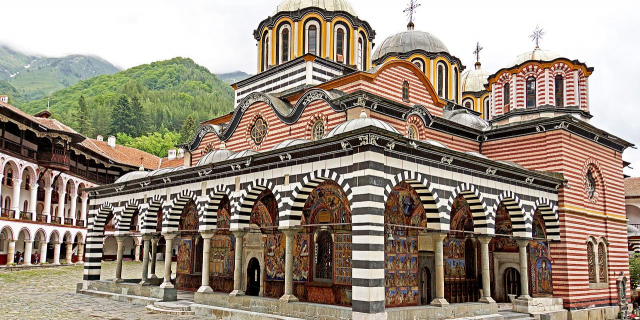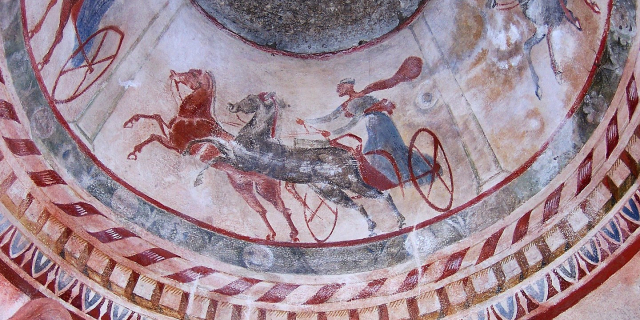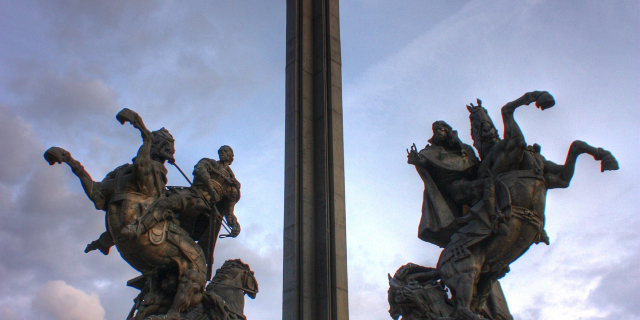The Selimiye Mosque (Turkish: Selimiye Camii) is an Ottoman imperial mosque, located in the city of Edirne (formerly Adrianople), Turkey. It was commissioned by Sultan Selim II and was built by the imperial architect Mimar Sinan between 1568 and 1575. It was considered by Sinan to be his masterpiece and is one of the highest achievements of Islamic architecture as a whole and Ottoman architecture in particular.
The mosque, together with its külliye, was included on UNESCO's World Heritage List in 2011.
The Selimiye Mosque was built at the peak of Ottoman military and cultural power. Sultan Selim II, the son and successor of Suleiman the Magnificent, chose Edirne instead of Istanbul (the Ottoman capital) as the location to build his own sultanic mosque. The reasons for this decision are a matter of debate among historians.[1] Selim II appeared to have a passion for the city, having served as its governor between 1548 and 1550, and he visited it frequently after becoming sultan.[2][3] Edirne, a former Ottoman capital, was also one of the most important cities in the empire and a major stop on the imperial highway between Istanbul and the Balkan provinces.[2][3] Other motivations may have included the fact that there were no more prominent hilltop sites in Istanbul available for the construction of an imperial mosque complex – at least not without resorting to mass expropriations.[4][3] At the time of the mosque's commission, Selim II had also not commanded a victorious military campaign, which Islamic scholars of the time considered to be a requirement for building a sultanic mosque in Istanbul.[4]
In March 1568 Selim II had asked Sinan to renovate the city's Old Mosque. Plans for a new imperial mosque, located on the hilltop above the Old Mosque, were probably begun around the same time.[2] Construction on the mosque was begun in 1568 or 1569 (976 AH) and completed in 1574 or 1575 (982 AH).[5][6][7] The mosque's construction and its waqf (charitable endowment) were ultimately funded with the help of the sultan's share of the spoils from the successful conquest of Cyprus, which was completed in 1571 with the surrender of Famagusta.[5] Selim II died in December 1574, before he was able to see the mosque fully completed.[8]
Later historyThe mosque underwent its first repairs by Sinan in 1584, after minor damage caused by lightning. An earthquake in 1752 also caused minor damage.[9] In 1808 some of the calligraphic decoration in the mosque was restored and a roof was added over the courtyard fountain, though it has since disappeared. During the reign of Abdülmecid I (1839–1861), the mosque's interior was re-plastered and its decoration redone, in a style partially imitating the former ornamentation.[9]
In 1865 Baha'u'llah, the founder of the Baha'i Faith, arrived with his family to Edirne as a prisoner of the Ottoman Empire and resided in a house near Selimiye Mosque,[10] which he visited often until 1868. It was at Selimiye mosque[11] where he was supposed to have had an open debate with Mírzá Yaḥyá Núrí (also known by the title of Ṣubḥ-i-Azal), an important event in the split of the Bábi Faith, which ultimately resulted in the formation of the Baha'i Faith guided by Baha'u'llah and the Azali Bábi Faith guided by Mírzá Yaḥyá.[12]
During the Russo-Turkish War of 1877–1878, some of the decorative tiles on the walls of the sultan's loge were looted and transferred to Moscow.[13][9] During the siege of the city in 1913, the dome of the mosque was damaged by artillery fire. On the orders of Atatürk, traces of the damage were left unrestored, as a reminder and warning to future generations. Soon after, at the end of the Second Balkan War, some of the mosque's oldest carpets were stolen by retreating Bulgarian troops.[9]
The mosque underwent restorations between 1954 and 1971, and some parts were also restored 1982 and 1984.[13] The mosque was depicted on the reverse of the Turkish 10,000 lira banknotes of 1982-1995.[14] In late 2021 another comprehensive restoration project on the mosque began, scheduled to be completed by 2025.[15]
































Add new comment